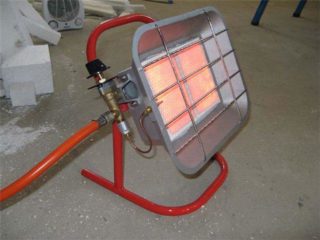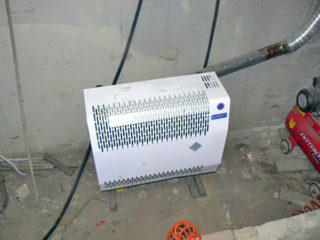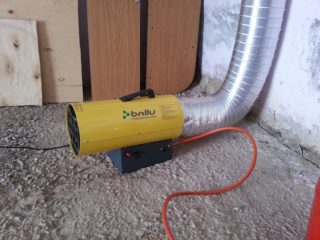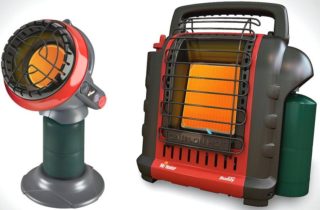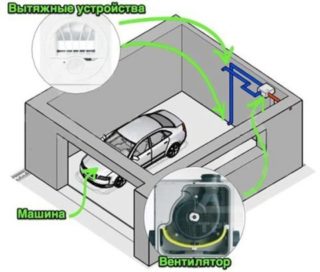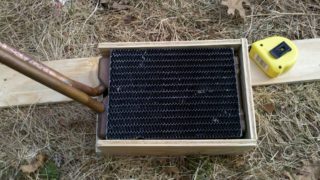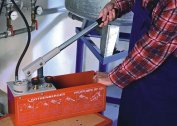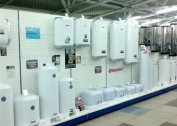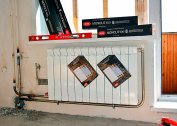A private garage is a place for storing a personal car and a workshop where spare parts are stored and minor repairs are organized. Units of garage buildings have central heating, and it is possible to lay electric wiring only in rare cases. All this forces users to look for some other source of heating, one of which is a gas heater for the garage.
Specifications
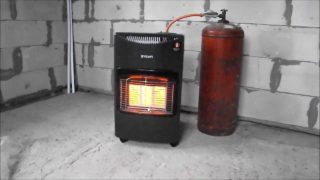
The main characteristics of gas heaters for garages include:
- type of device (IR, convector, catalyst, etc.);
- developed thermal power in watts;
- installation method (wall or floor);
- dimensions and weight;
- life time.
Each of the considered indicators fully characterizes one or another model and helps to choose an aggregate suitable for the garage.
Advantages and disadvantages
The advantages of gas garage heaters operating from a separate cylinder are:
- compactness and mobility;
- low cost of the equipment and fuel for it;
- availability of energy sources;
- environmental cleanliness (absence of combustion waste);
- simplicity of operation;
- long service life (15–20 years);
- the speed of heating the room.
The operational safety of this heating method is not in doubt if the necessary precautions are taken when using gas, which require the organization of effective ventilation (forced or natural).
The danger of a gas mixture explosion can be considered a disadvantage of the units under consideration only if the rules for their operation are violated.
Varieties of gas heaters
Known examples of gas heaters according to the installation method are divided into wall models and mobile floor units. The first are made in the form of a convector, designed for main mixtures, in which light methane predominates. They will need to bring a separate channel with fuel and equip a chimney.
According to their structure and principle of operation, gas heaters produced by industry are divided into the following types:
- convectors;
- infrared devices;
- heat guns;
- catalytic devices.
Each of these options has its pros and cons and requires a separate consideration.
Infrared heaters (ceramic appliances)
The operation of IR devices is based on the principle of the thermal effect of the action of e / m waves of a certain frequency. Infrared rays without delay propagate through the serviced room and heat the surfaces encountered on the way: walls, ceilings and furnishings. From them, the accumulated heat is given to the air.
The source of radiation in such a device is an open gas flame or a ceramic heating element that receives energy from combusted fuel. Formed IR rays are collected in a special reflector and propagate in the desired direction. The advantages of infrared gas equipment include:
- independence from the power grid;
- compactness and profitability;
- silent operation;
- ecological cleanliness.
The disadvantage of such heaters is the inability to heat large areas (narrow focus of thermal action).
For small rooms, propane IR emitters, made in the form of ceramic furnaces with an integrated cylinder or as compact gas-heated panels, are optimally suitable. Both versions of the devices are equipped with oxygen and gas leakage sensors, and also have automatic protection against fire. Their capacity is enough for heating garage spaces ranging from 4 to 40 square meters. meters.
Convectors
Gas convectors for garages differ from other models by the presence of a ceramic / steel heat exchanger. This heating element is first heated by an open flame, and then transfers heat to the outside due to air convection. In its lower part there are openings for the influx of cold air, and on top the same for the exit of hot jets.
Convectors heat the room to a comfortable temperature for a long time, but they do it very efficiently - with minimal fuel consumption. Their advantages include the burning of gas in a closed chamber and, as a result, the inability of the combustion products to enter the room. Gas convectors are mounted on the walls of the garage, in which a hole for the chimney is pre-punched.
Heat guns
This type of heaters is considered the fastest in terms of heating rate of garage spaces. Heat guns have two versions, the first of which is based on the use of a built-in fan. To connect, you need a valid electrical network.
The second version of the product works due to the thrust generated during gas combustion. The power of such a heater is significantly lower, but in this case, you can do without electricity. The effectiveness of the use of both modifications depends on the quality of insulation of the garage structure. If the heated garage is not completely insulated, it makes no sense to count on a quick and good warming up of the room.
Catalytic heaters
In infrared heaters of this class, heat is generated due to the effect of catalysis - gas oxidation on a heated surface having platinum deposition. In this case, an open flame as such is not observed, and propane is almost completely utilized. Efficiency and thermal power indicators are almost no different from similar parameters for infrared models.
The main disadvantage of catalytic devices is their short service life, since the catalyst installed in them is designed to operate for no more than 2–2.5 thousand hours. At the end of this period, the heater is simply thrown away. It is usually enough for one winter season.
Rules for choosing gas heaters for a garage
To choose the right gas heater for your personal garage, you should consider the specific operating conditions. If you have to stay for a long time in the garage, it is best to purchase a convector. When the working conditions require rapid heating, it is wiser to use a heat gun.
IR heaters are ideal for maintaining a comfortable room temperature throughout the day. When evaluating catalytic devices, it is important to consider their high price, which is justified by fire safety and minimal oxygen burning. Ceramic models are characterized by low price and long service life.
Safety precautions
Gas heaters are devices whose operation it is important to comply with the following safety requirements:
- it is not allowed to cover the working part of the device with cloth things, which are sometimes hung out for drying;
- the garage room must be aired;
- when using the unit, it is forbidden to remove the protective grille from it;
- it is not allowed to direct thermal radiation to flammable liquids, as well as to cloth and paper objects.
If the operating position of the unit is specifically specified in the user instructions, it is not allowed to change it to another placement option.
Industrial Model Overview
Gas equipment, like diesel diesel heater for a garage, working on diesel fuel, is not recommended to be done independently. Experts advise purchasing industrial devices from a trusted manufacturer. On the domestic market, the international holding company Ballu Industrial Group has well established itself with representative offices in 6 countries, including Russia, China and Japan.
Another well-known company Kovea from South Korea specializes in gas equipment, almost half of which is sold in the Russian markets. The well-known Swedish concern Timberk, which produces modern water heaters, as well as heating and climatic equipment, enjoys the same popularity.
An example of a model specifically designed for the garage is the TGH 4200 X1 ceramic heater with a floor stand. HPV GmbH is not such a well-known company to most Russians. A product sample from it is a portable infrared heater “4200 ZS” with a capacity of 4.3 kW.
Homemade gas garage heaters
The main advantage of such a device is that its manufacture does not require expensive branded parts. In this case, it is possible to dispense with improvised components available to any garage owner.
Preparation of materials
To make a gas heater, you will need to prepare:
- branded burner with valve;
- tin sheet of suitable size;
- tin snips;
- electric drill with a set of drills;
- riveter and rivets to it.
For the manufacture of a protective lattice, you will need a piece of a fine-mesh metal mesh of the desired shape.
Assembly assembly
The assembly is assembled as follows:
- The contour of the future heater body with four rectangular ears is drawn on the tin blank.
- According to the marking, a workpiece with slices that do not have burrs is cut.
- A burner is attached to the body curved in the form of a pipe with ears using bolts.
- Ears on the other end are used to secure the protective net.
As a result of the assembly, a heater with tin walls and working ends is obtained.
